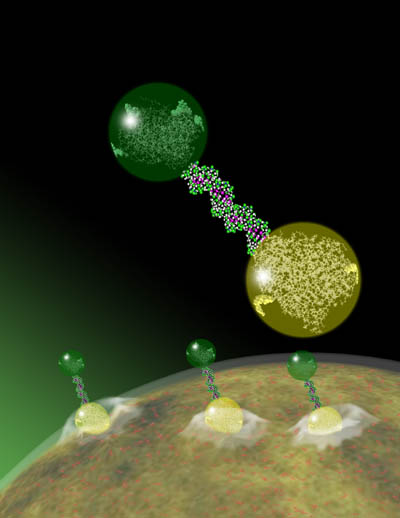Dr. Yuval Shaked from the Rappaport Faculty of Medicine at the Technion and researchers from all over the world have shown that the effectiveness of combining chemotherapy with an anti-cancer drug that damages new blood vessels depends on the chemotherapy drug administered

Chemotherapy is still one of the main treatments against cancer. Although the treatment is largely effective (especially in cancers that are sensitive to the treatment), there are still situations in which the treatment is accompanied by regrowth of the cancer.
Dr. Yuval Shaked from the Rappaport Faculty of Medicine at the Technion and his former instructor Dr. Robert Kerbel at the University of Toronto, together with other researchers from Salon Kettering (New York, USA), from the European Cancer Institute (Milan, Italy), and from Utrecht University in the Netherlands show In the article published today in the prestigious scientific journal Cancer Cell, that some of the chemotherapy treatments given today are accompanied by a rapid response of the body which mobilizes bone marrow cells that form new blood vessels in cancer and causes them to home in on the cancerous tumor, thus explaining how the chemotherapy treatment can sometimes help the cancer to re-grow.
In contrast, there are other chemotherapy treatments that do not affect the body in this way. Dr. Shaked and his colleagues show how treatments that combine chemotherapy with drugs that aim to damage blood vessels in cancer, such as Avastin, work in combination. Because when you combine a chemotherapy treatment (such as paclitaxel) that causes the mobilization of bone marrow cells that form new blood vessels with a drug that impairs the formation of new blood vessels in cancer, the treatment is more effective than if the treatment provided was the chemotherapy treatment alone. In contrast, the combination of other chemotherapy drugs (such as gemcitabine) which have no effect on the bone marrow cells that produce new blood vessels - with a drug that damages the new blood vessels, is not effective at all.
Dr. Shaked's research also shows additional targets that can damage the process of creating new blood vessels and the regrowth of the cancer after the chemotherapy treatment, such as the use of a drug that neutralizes factor 1-SDF. The study provides answers to the question of how treatment that prevents the formation of new blood vessels in cancer increases the effectiveness of certain chemotherapy treatments, but warns that the effectiveness depends in part on the type of chemotherapy treatment given.

3 תגובות
The process combined with Avastin to prevent neovascularization is certainly very interesting.. What happens with the process of macrophages learning to attack cancer cells and also by attacking bacteria present in the tumor and thus eliminating the tumor.. in general.. the crazy part of the chemical "intelligence" of cancer cells and their survival.. When destroying my life virus there is no evolutionary advantage. Or are we missing something in the evolution of deadly cancer cells? Interesting, isn't it?
In my opinion, the chemotherapy treatment is no different from the radiation therapy that was given to Yemeni immigrants in the sixties to treat ringworm.
Among other things, the chemical treatment creates more resistant cancer cells and does not treat the disease itself.
I would be silent if there didn't seem to be any real benefit in poisoning humans.
But I know at least 2 herbalists who cure the disease very quickly with simple and non-dangerous things.
such as pomegranate oil
such as beetroot
This is my personal opinion (and that of several million other sane people in the world, I think
Tell me where Kochav Tzedek is